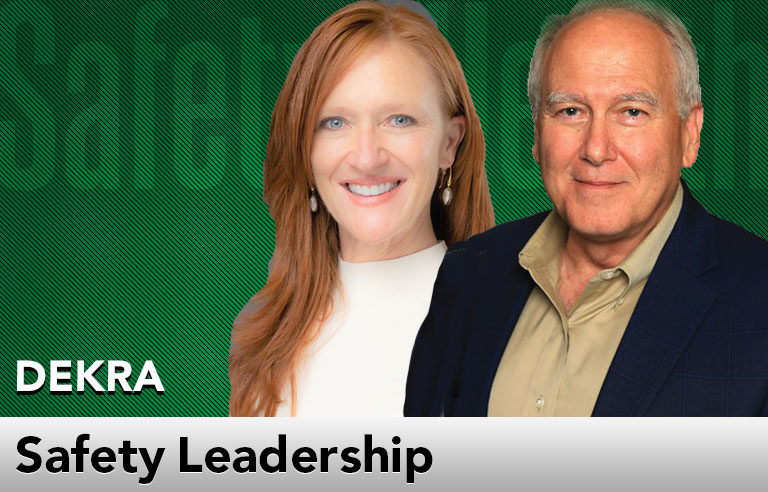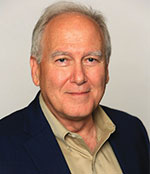Safety Leadership: Hey HR, we need you at the table!

Editor’s Note: Achieving and sustaining an injury-free workplace demands strong leadership. In this monthly column, experts from global consulting firm DEKRA share their point of view on what leaders need to know to guide their organizations to safety excellence.
As the owner, champion, guide and monitor of the people side of any organization, the human resources department naturally plays a role in the most basic of all human needs – the need to feel safe and be safe. The term “psychological safety” has emerged as the tie that binds. This is HR’s arena as much as it is the environmental, health and safety department’s – and it’s a win-win for both.
HR’s contribution to EHS outcomes can also positively affect employee engagement; equity, inclusion and belonging; talent retention; and time to fill open positions, as well as the overall employment brand.
If your organization strives to be an employer of choice with world-class safety, here are some ways HR can be a key player in bringing that ambition to life:
Recognize safety as the vital enabler it is. Safety is a value, not a goal. Initiatives that drive human connection are not a distraction from your facilities upgrade or your people survey. They are fertilizer for them.
Participate in safety team meetings. Join in the incident investigations and event learning sessions. Be the voice at the table representing the human factors (such as fatigue, stress and social thinking) behind an incident.
Make safety learning part of your brand. Putting annual safety training on a learning management system and calling it compliance training is a fear-based, transactional exchange. Safety is more than that. If employees don’t understand how to apply these concepts, someone loses a loved one. Advocate meaningful training.
Support in-field safety and line-of-work coaching – and equip leaders and managers accordingly. Increase training effectiveness by promoting on-the-job coaching to augment safety learning, and to apply safety principles and practices in the field. Align leaders and managers by working with EHS to design leadership development programs beyond workshops and reading lists, including developing their teaching and in-field coaching skills.
Emphasize frontline leadership development. Leadership competencies include communication, collaboration and vision. But frontline workers usually get promoted to supervisor roles for being heads-down fast producers, even tempered and generally affable. HR, EHS and operations leaders should collaborate on field-based, applied training for new leaders that drives retention, career development, engagement, and increased psychological and physical safety. Plus, by practicing their skills in conversations about safety, frontline leaders also build the muscles to address topics such as attendance, productivity and attitude.
Teach frontline workers about their brain-centric hazards. These are the hazards at play when someone gets hurt even when the facility is pristine, the equipment is in compliance and proper procedures are followed. Everyone has a brain, and everyone’s brains can trip over the same hazards. Reinforce the concepts in the field.
Align HR programs to safety strategy. In performance planning and the rewards recognition process, consider metrics proven to influence human behavior. Focus on actionable leading indicators, such as connected leader hours, human performance reliability focused training modules delivered and in-field coaching time.
Call out HR’s own risks. Learn and address how HR adds risk with candidate selection, scheduling, overtime, commute time and distance traveled, break-period dynamics, what we measure, and how we communicate.
HR partners are responsible for the most volatile, unpredictable resource in any organization and are the fulcrum point in the balancing act between people and profit. Please, encourage them to take the seat they’ve earned. We need them at the table.
This article represents the views of the author and should not be considered a National Safety Council endorsement.
 Paul Angelo, M.S., is a principal consultant for DEKRA. He uses his more than 30 years of consulting and program management experience to analyze, design and implement exposure-reduction initiatives, culture change and leadership development.
Paul Angelo, M.S., is a principal consultant for DEKRA. He uses his more than 30 years of consulting and program management experience to analyze, design and implement exposure-reduction initiatives, culture change and leadership development.
 Toni Fleming is vice president of DEKRA. She applies world-of-work insights, global social and economic trends, and leading-edge innovation to help improve safety outcomes.
Toni Fleming is vice president of DEKRA. She applies world-of-work insights, global social and economic trends, and leading-edge innovation to help improve safety outcomes.
Direct to your inbox: Sign up to be notified in email about new "Safety Leadership" columns.
Post a comment to this article
Safety+Health welcomes comments that promote respectful dialogue. Please stay on topic. Comments that contain personal attacks, profanity or abusive language – or those aggressively promoting products or services – will be removed. We reserve the right to determine which comments violate our comment policy. (Anonymous comments are welcome; merely skip the “name” field in the comment box. An email address is required but will not be included with your comment.)

